It’s a question that brings up a lot of confusion about what’s allowed in big retail stores. You see products on the shelf, but the rules around buying them feel unclear. Getting this wrong isn’t just awkward; it has real consequences for retailers and the brands they carry.
No, you generally cannot buy a sex toy from Walmart if you are under 18. While specific laws vary by state, most classify these items as "adult novelties" or materials harmful to minors, legally restricting their sale to adults. Walmart enforces this with store policies that require cashiers to verify a customer’s age with a valid ID before completing the sale, similar to how they handle alcohol or tobacco.
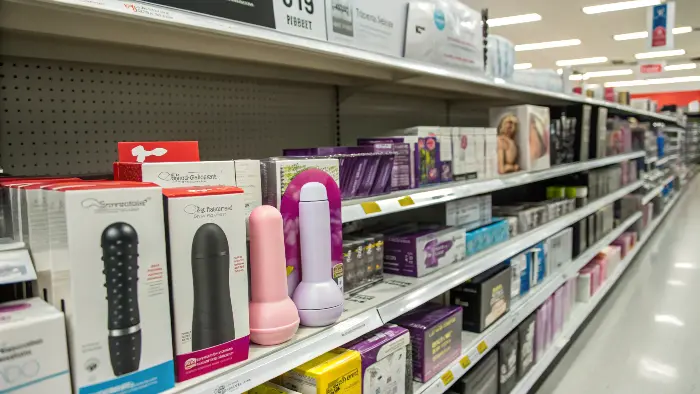
The simple "no" at the checkout counter is just the surface of a much deeper issue. For those of us in the business of creating and sourcing these products, that single transaction involves a complex web of state laws, corporate policies, and brand responsibility. Understanding these layers is not just interesting—it’s essential for building a successful and sustainable brand in the wellness space. Let’s dig into what these rules really mean for us and our retail partners.
What are the actual laws about selling sex toys to minors?
Navigating the legal rules for adult products can feel like walking through a minefield. The laws aren’t consistent across the country, and what’s perfectly fine in one state might be a legal problem in another. This inconsistency creates risk, as a mistake could lead to fines or legal trouble for your retail partners, directly impacting your business relationship and your brand’s placement in their stores.
There is no single federal law in the United States that specifically bans the sale of sex toys to minors. Instead, this issue is handled at the state and local level through various "obscenity" or "materials harmful to minors" statutes. Most states use these laws to effectively prohibit such sales by defining adult toys as products intended for adults only. This places a legal duty on retailers to prevent sales to anyone under the age of 18 or, in some places, 21.
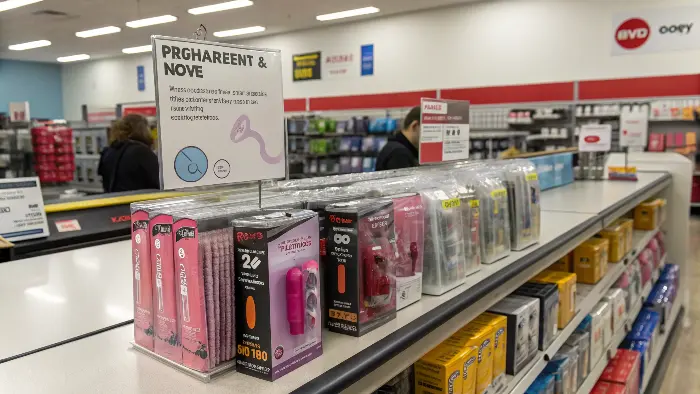
When I first started in this industry, I thought a product was just a product. But I quickly learned that the legal context is everything. The core of these laws often revolves around a legal concept designed to protect children from content or products deemed inappropriate for their age.
Understanding "Harmful to Minors" Statutes
These laws are the main reason you can’t buy a sex toy if you’re under 18. They give states the power to regulate the sale and distribution of materials that, while not necessarily "obscene" for adults, are considered unsuitable for minors. A product is often judged on whether it appeals to a "prurient interest" in sex for minors and lacks serious literary, artistic, political, or scientific value for them. Because sex toys are designed for sexual stimulation, they almost always fall under this category in the eyes of the law. As a brand owner, this means your product is automatically classified as age-restricted in most markets.
State-by-State Variations
The real challenge is that every state has its own interpretation. For example, some states have very old and strict anti-obscenity laws that can be applied broadly. In contrast, other states have more modern and specific laws that clearly define what constitutes an "adult novelty" and outline the exact requirements for its sale. This patchwork of regulations is why major national retailers like Walmart adopt a single, strict policy nationwide. It’s easier and safer for them to enforce the highest standard everywhere than to tailor their policies for each state.
| State Category | General Legal Approach | Implication for Retailers |
|---|---|---|
| Strict States | Broad anti-obscenity laws may apply. | Retailers are extremely cautious, often limiting product selection. |
| Moderate States | Clear "harmful to minors" laws. | Standard age verification (ID check) is required and enforced. |
| Liberal States | Fewer specific restrictions. | Retailers still follow internal policies, usually requiring age checks. |
For us, this means we must design and package our products with the strictest potential market in mind. Clear labeling, discreet packaging, and responsible marketing are not just good practices—they are essential for gaining and keeping access to major retail channels.
How do major retailers like Walmart handle these sales in practice?
You might understand the laws, but how a massive retailer like Walmart actually applies them on a daily basis can seem like a mystery. Their internal systems and employee training are what turn legal theory into real-world action. If their process has a loophole or fails, your product could be at the center of a public relations crisis, which could lead to it being pulled from shelves nationwide overnight.
In practice, major retailers use a two-pronged approach: technology and training. In-store, their Point of Sale (POS) systems are programmed to flag certain items as age-restricted. This automatically triggers a prompt forcing the cashier to stop the transaction and ask for ID. Online, they rely on simpler methods like age-gate pop-ups and requiring a credit card for payment, as credit cards are generally held by adults. These online checks are less secure, which is why in-store diligence is so important.
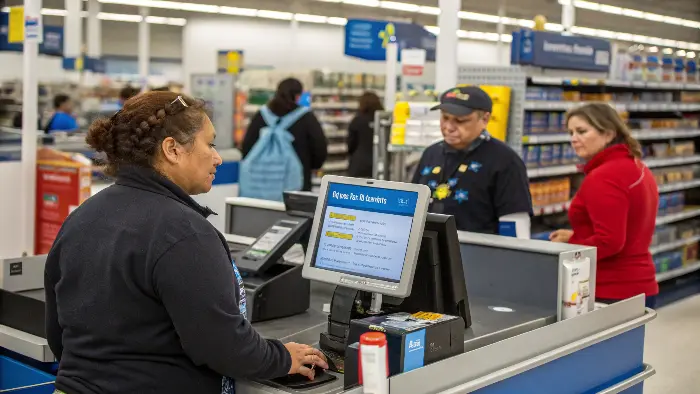
The systems that retailers build to manage this are more complex than they appear. It’s a combination of technology doing the heavy lifting and people making the final judgment call. I once spoke with a buyer for a large chain, and she told me her team’s biggest fear wasn’t a lawsuit, but a viral video of a teenager buying an adult product in their store. That fear is what drives their incredibly strict internal policies.
In-Store Point of Sale (POS) Systems
This is the retailer’s first line of defense. When we supply a product, it’s assigned a specific code (a SKU) in their inventory system. Our products are flagged in that system as "age-restricted." When the cashier scans the barcode, the cash register automatically freezes the sale and displays a message like "VERIFY CUSTOMER AGE." The cashier cannot override this without a manager’s key or code. They are trained to ask for a government-issued ID and verify the date of birth. This process removes individual judgment and makes age verification a mandatory, non-negotiable step.
The Online "Age Gate" Challenge
Selling online is a different beast. The most common tool is the "age gate," a simple pop-up that asks users to confirm they are over 18. We all know this is easily bypassed. Retailers know it too. It serves more as a legal disclaimer than a real barrier. They add another layer by requiring a credit card, as the legal holder of a credit card must be 18 or older. However, this is also imperfect, as a minor could use a parent’s card.
| Verification Method | How It Works | Effectiveness |
|---|---|---|
| In-Store POS Prompt | System flags item, forces cashier to check ID. | High. Hard to bypass. |
| Online Age Gate | User clicks a button to confirm their age. | Low. Easily bypassed. |
| Credit Card Requirement | Assumes cardholder is an adult. | Medium. A deterrent but not foolproof. |
Because of the weaknesses in online verification, retailers put immense pressure on brands to market responsibly. They expect us to ensure our online presence and product descriptions are clearly aimed at an adult audience, helping them reduce the risk of attracting underage buyers in the first place.
Why is understanding age verification so critical for my adult product brand?
It’s easy to think that age verification is the retailer’s problem. After all, you create the product, and they handle the final sale. You might feel your job is done once the product ships to their warehouse. But if your product ends up in the wrong hands, it’s your brand name that gets associated with the controversy. This can shatter the trust you’ve built with both your customers and your valuable retail partners, undoing years of hard work in an instant.
Understanding age verification is critical because it directly impacts your brand’s reputation, market access, and legal standing. Retailers will only work with brands they see as responsible and low-risk. If your product is linked to sales to minors, you risk being delisted. Furthermore, a failure to address age restrictions can damage consumer trust and even expose your company to legal challenges. It is a fundamental part of building a legitimate, mainstream wellness brand.
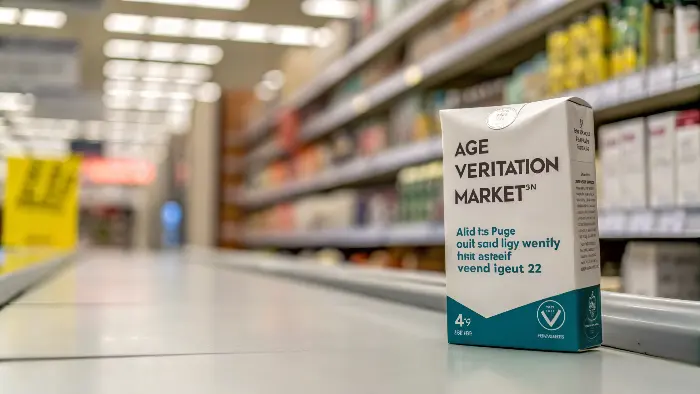
This isn’t just about following rules; it’s about strategic brand management. In my early days, I focused solely on product quality and design. I quickly learned that retailers and customers care just as much about brand integrity. Demonstrating that you take issues like age verification seriously is a powerful way to show that you are a professional and trustworthy partner.
Protecting Your Brand Reputation
In today’s market, your brand is one of your most valuable assets. Being known as a company that cares about consumer safety and responsible practices is a huge competitive advantage. It helps you attract a more mature, loyal customer base. On the flip side, a single news story or viral social media post about your product being sold to a minor can define your brand in a negative light for years. Proactively thinking about age verification shows that you are a leader in the industry, not just a follower.
Maintaining Retail Partnerships
Retailers like Walmart, Target, or even large pharmacy chains have very strict vendor codes of conduct. They are taking a risk by putting adult wellness products on their shelves. They need to know that their brand partners are just as committed to safety and compliance as they are. If your brand causes a problem, you become a liability. They will not hesitate to drop your products and replace them with a brand that gives them more confidence. A solid understanding of these issues makes you a better, more reliable partner.
Mitigating Legal and Financial Risks
While the retailer is usually the one facing a fine for selling to a minor, that doesn’t mean your brand is completely safe. In a serious incident, a brand could be named in a lawsuit, especially if your marketing could be seen as appealing to a younger audience. Having clear age warnings on your packaging, responsible marketing materials, and strong vendor agreements that outline each party’s responsibilities are all crucial steps to protect your business from legal and financial harm. It’s about controlling what you can control.
What are the best practices for age verification on my own e-commerce site?
When you sell directly to consumers from your own website, you gain full control over your brand message and customer experience. But with that control comes the full weight of responsibility for compliance. A simple "Are you over 18?" pop-up that someone can click away is no longer enough to protect your business. A weak verification system can lead to payment processor disputes, legal fines, and a loss of credibility that can be impossible to recover from.
The best practice for your e-commerce site is a multi-layered strategy. First, implement a clear and unavoidable age gate that appears immediately upon visiting your site. Second, require customers to create an account and agree to your terms of service, which should explicitly state your age policy. Most importantly, integrate a third-party age verification service (AVS) that cross-references a customer’s information against public records during checkout to confirm their age. This creates a robust, defensible system.
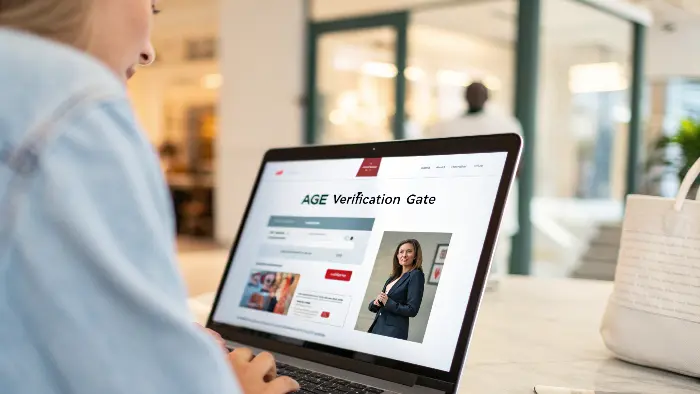
Building my own brand’s e-commerce store was an eye-opener. I realized that I was now the retailer, and all the responsibilities I saw major chains dealing with were now mine. Investing in a proper age verification system wasn’t just an expense; it was a foundational investment in the long-term health and legitimacy of my business.
Layer 1: The Simple Age Gate
This is your front door. It should be the very first thing a visitor sees. It serves as a clear statement of policy and a legal disclaimer. While it won’t stop a determined minor, it signals to all users, as well as to regulatory bodies and payment processors, that you are aware of your obligations and are taking the first step to comply. Make it simple, clear, and impossible to ignore.
Layer 2: Terms of Service and Account Creation
This layer adds a legal backstop. By forcing users to create an account and check a box agreeing to your Terms of Service before they can purchase, you are creating a contractual agreement. Your terms should clearly state that users must be of legal age to purchase products and that they are truthfully representing their age. This adds another layer of legal protection for your brand.
Layer 3: Third-Party Age Verification Services (AVS)
This is the most effective and important layer. These services integrate into your checkout process. When a customer places an order, the AVS takes their name, address, and date of birth and checks it against independent, third-party databases (like public records) to confirm they are who they say they are and are of legal age. This is an active, not passive, form of verification.
| Verification Layer | Implementation Complexity | Level of Protection |
|---|---|---|
| Age Gate | Low | Low (Deterrent only) |
| Terms of Service | Low | Medium (Legal protection) |
| Third-Party AVS | Medium | High (Active verification) |
Services like AgeChecker.net or Veratad offer solutions that are relatively easy to install on major e-commerce platforms like Shopify. The cost is minimal compared to the potential cost of a compliance failure. Implementing a true AVS is the modern standard for any responsible online seller of adult products.
Conclusion
So, while a teenager can’t buy a sex toy at Walmart, the reasons why are a critical lesson for any of us in this industry. It’s a mix of state laws and, more importantly, strict corporate policies designed to protect the retailer. For brand owners, this reality underscores our duty to be responsible partners, from product design to online sales, ensuring we are always building a brand that inspires trust and confidence.
